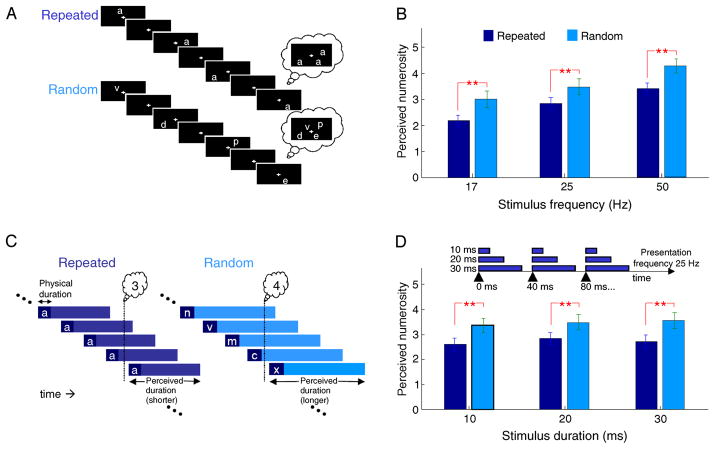Figure 1.
Repeated stimuli subjectively proliferate less than random stimuli. (A) Example sequences of stimulus presentation and perceived numerosity for repeated and random stimuli. (B) Number of characters perceived to be present for repeated and random stimuli. Participants report more characters present on screen when the stimuli are different than when they are repeated. n = 31. Error bars SEM. Demonstration videos: http://eaglemanlab.net/proliferation. (C) To explain these results, we hypothesize that the visual persistence of a repeated stimulus is contracted compared to a novel stimulus. Even while participants are not asked to make an explicit temporal judgment, the duration distortion changes their interpretation of the visual scene. (D) Duty cycle does not change numerosity estimates. Stimuli were presented for different physical durations while keeping the presentation frequency constant. No significant difference was found in perceived numerosity for different stimulus durations when maintaining a constant stimulus presentation frequency (** indicates p < 0.01; * indicates p < 0.05, paired t-tests). n = 31. Error bars SEM.

